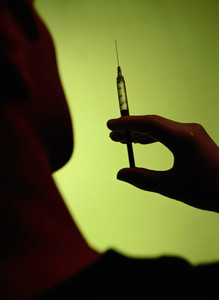EMA approved its first biosimilar granulocyte colony-stimulating factor (G-CSF, filgrastim) for use in Europe back in 2008, since then, several biosimilar G-CSFs have been approved, including Biograstim, Filgrastim ratiopharm, Ratiograstim, Tevagrastim, Filgrastim Hexal, Zarzio and Nivestim. All biosimilar G-CSFs were approved using Amgen’s Neupogen as the reference product. Filgrastim ratiopharm was withdrawn on 20 April 2011.
Comparison of EPARs for G-CSF biosimilars approved in Europe
Biosimilars/Research
|
Posted 14/12/2012
 0
Post your comment
0
Post your comment

Granulocyte colony-stimulating factors (G-CSFs) are growth factors which are used to restore neutrophil production in patients undergoing chemotherapy. Febrile neutropenia is a life-threatening complication for patients undergoing chemotherapy. It causes a loss of neutrophils and fever.
EMA publishes a full scientific assessment report called a European public assessment report (EPAR) for every medicine granted a central marketing authorization by the European Commission. Information on how the biosimilars were evaluated by EMA can be obtained from studying these EPARs, see Table 1.
Table 1: Comparison of EPARs for G-CSF biosimilars approved in Europe [1]
| Product characteristics | Zarzio/filgrastim hexal | Biograstim/filgrastim ratiopharm/ratiograstim/ tevagrastim (XM02) | Nivestim |
| Produced in | Escherichia coli | ||
| Strengths |
300 mg/0.5 mL 480 mg/0.5 mL |
300 mg/0.5 mL 480 mg/0.8 mL |
120 mg/0.2 mL 300 mg/0.5 mL 480 mg/0.5 mL |
| Product |
Different buffer systems: glutamate for Zarzio and Filgrastim hexal, and acetate for Neupogen no buffer specified |
Buffered with acetate. Differs from Neupogen in pH and in concentration of filgrastim and polysorbate 80 | Buffered with acetate |
| Preclinical studies | Six primary PD studies (four in vitro); three toxicology studies (comparative repeat-dose toxicity, toxicokinetics, local tolerance); no secondary PD studies; no safety pharmacology studies; no PK studies | Six primary PD studies (three in vitro); one secondary PD study (in vitro); three safety pharmacology studies; two PK studies; six toxicology studies (repeat dose toxicity study non-comparative) | Primary PD studies: PD response was determined in a neutropenic rat model, as well as in healthy rat in a repeat-dose toxicity study; no secondary PD studies; no safety pharmacology studies; PK assessed as part of the repeat-dose toxicity study; no single-dose toxicity study |
| Clinical data Phase I (PK/PD) studies | Four PK/PD studies in healthy volunteers | Two PK/PD studies in healthy volunteers | Two PK/PD studies in healthy volunteers |
| Phase III studies | One non-controlled study in patients with breast cancer | Three RCTs (patients with breast cancer, lung cancer, NHL) | One RCT in patients with breast cancer
|
| Efficacy data
|
Similar to Neupogen The comparability of the efficacy based on a PPD study in healthy volunteers (absolute neutrophil and CS34+ cell counts) was considered acceptable by the CHMP |
Similar to Neupogen There were no statistically significant differences between XM02 and Neupogen with regard to the mean ANC nadir and with regard to time to ANC recovery in the studies |
Similar to Neupogen There was therapeutic equivalence between the two products in terms of efficacy with regard to the mean ANC nadir and with regard to time to ANC recovery |
| Safety data | Similar to Neupogen | ||
|
PD: pharmacodynamic; PK: pharmacokinetic; RTC: randomised controlled trial; NHL: non-Hodgkin’s lymphoma; ANC: absolute neutrophil count; CHMP: Committee for Medicinal Products for Human Use. Source: EMA |
|||
All of the G-CSF biosimilars are manufactured in facilities with state-of-the-art technology. All products have passed the regulatory requirements for approval, by EMA, which includes phase I and phase III trials, pharmacodynamic and pharmacokinetic evaluations and studies on efficacy and safety. Despite these rigorous comparisons of the biosimilars and the reference product, there are still some concerns regarding their long-term evaluation, in particular, the limited experience at the time of approval of these products in terms of efficacy, safety and immunogenicity. The author of the study therefore recommends pharmacovigilance for all biosimilars.
EMA guidelines allow extrapolation of data to additional indications, for example, paediatric indication and peripheral blood progenitor cells in healthy donors. However, the author of the study acknowledges that a lot of work remains to be done in terms of clarification with regard to substituting a biosimilar G-CSF for the originator product. And in fact this is a decision that is not made by EMA, but that is made on a country-by-country basis in the EU.
Ultimately, only clinical trials and effective post-marketing pharmacovigilance will provide definitive evidence that a biosimilar is comparable to the reference product in terms of efficacy and safety.
Conflict of interest
The author of the study declared that he has received honoraria from Amgen and from Sandoz for lecturing.
Related article
Investigating G-CSF biosimilars approved in Europe
Reference
1. Gascon P. Presently available biosimilars in hematology-oncology: G-CSF. Target Oncol. 2012 Mar 7; Suppl 1:S29-34.
Permission granted to reproduce for personal and educational use only. All other reproduction, copy or reprinting of all or part of any ‘Content’ found on this website is strictly prohibited without the prior consent of the publisher. Contact the publisher to obtain permission before redistributing.
Source: EMA
News
FDA approves six denosumab biosimilars
EMA recommends approval for four biosimilars targeting three therapies
General
Samsung Bioepis wins Pyzchiva case; Regeneron patent rulings threaten foreign biosimilars
Chinese biosimilars go global: growth, partnerships, and challenges
What is the future for the US biosimilar interchangeability designation

Biosimilars/Research Posted 05/06/2025
Biosimilar clinical efficacy studies: are they still necessary?

Biosimilars/Research Posted 27/05/2025
The best selling biotechnology drugs of 2008: the next biosimilars targets








Post your comment